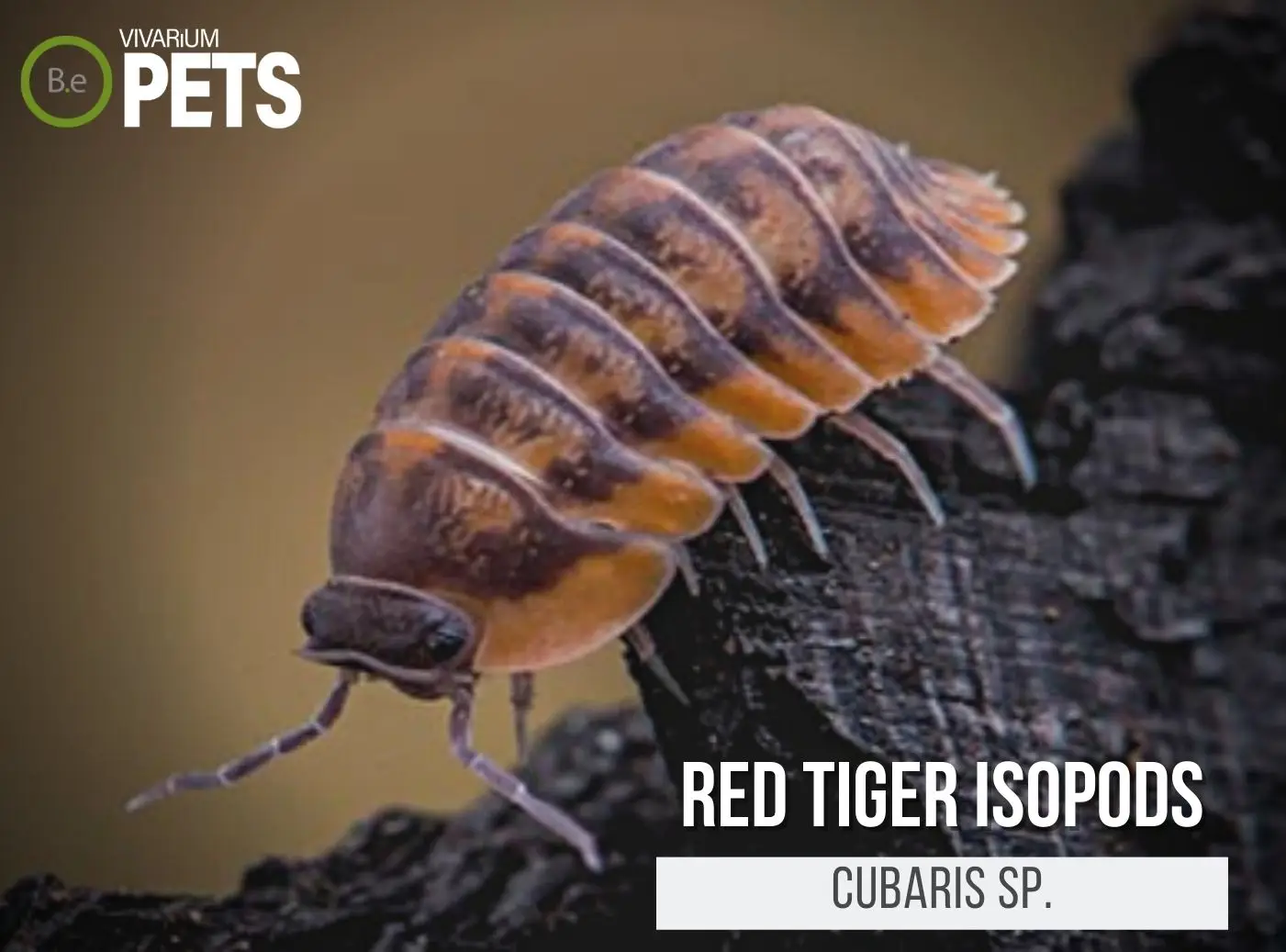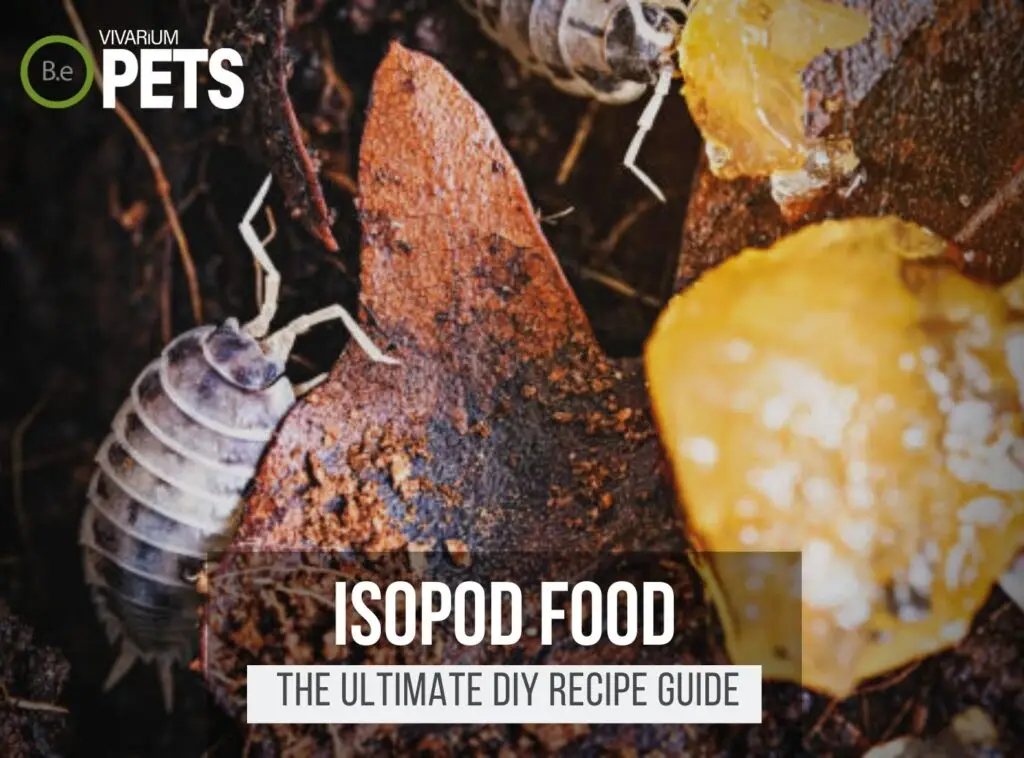Are you an exotic pet enthusiast dreaming of bringing home some amazing new critters? Look no further than Cubaris Isopods!
These fun, small crustaceans are becoming increasingly popular and they make the perfect pet for the low-maintenance hobbyist.
But before you buy, it is important to do your research and understand their specific needs to care for them properly.
This article will teach you everything you need to know about Cubaris isopods. Let‘s explore these amazing creatures and get you started on your journey to becoming an expert Cubaris isopod owner!
Table Of Contents:
ToggleWhat Are Cubaris Isopods?
Cubaris Isopods are a type of exotic pet that belongs to the suborder Oniscidea, commonly known as “woodlice“. The word “Cubaris” refers to the genus of this particular species of isopods.
Except for Cubaris murina and Nesodillo arcangelii, most of the isopods of this species are commonly referred to as Cubaris sp. with the common name in apostrophes.
I guess the variations of mutations within Cubaris sp. are happening faster than science can decide on names for these amazing creatures.


Benefits Of Cubaris Isopods
Besides the usual benefits of using isopods within enclosures, there are some trend-changing advantages to them as well.
Where most small crustaceans like isopods are used as feeder bugs for reptiles, amphibians, and insect enthusiasts, these designer critters are becoming increasingly popular just as pets for terrariums.
They are very resilient and easy to care for. In addition, the popular pet isopods will consume rotting wood, dead plants, and decaying material, thus helping to keep terrariums clean.
Create the perfect home for your isopods with our Customizable Isopod Terrarium Kits, designed to meet all their habitat needs.
Best Types Of Cubaris Isopods
Rubber Ducky Isopods (Cubaris sp. ‘Rubber Ducky’)
Rubber Ducky Isopods set the trend for the Cubaris isopod trend. These guys are undoubtedly the most adorable terrarium pets one could acquire.
They’re easy to care for, but not quite as easy to breed in captivity. This puts the price of acquiring them on the higher end of most hobbyists’ budgets.
If you’re looking for more specifics on this isopod, here’s a full care guide on Rubber Ducky Isopods.
Panda King Isopod (Cubaris sp. ‘Panda King’)
Panda King Isopods are the rival mutation to Rubber Duckies. They are just as pricey, just as cute, and a bit more interactive.
These Cubaris Isopods are one of the many variations you might come across that resembles a zoo animal.
They’re also easy to care for and known to be difficult to breed in captivity. This is one of the many reasons some might consider these terrarium pets rare.
If you’re looking for more specifics on this isopod, here’s a full care guide on Panda King Isopods.
Little Sea Isopods (Cubaris murina)
Little Sea Isopods are palish tan or grey colored isopods but don’t let the meek color scheme mislead you on the active scavagers.
They’re one of two Cubaris isopods on this list that science has assigned the species name “murina” to.
This mutation of Cubaris murina resembles a prehistoric deep sea crustacean when observed. Nonetheless, these guys are just as charming as Cubaris sp. come.
If you’re looking for more specifics on this isopod, here’s a full care guide on Little Sea Isopods.
Papaya Isopods (Cubaris murina ‘Papaya’)
Papaya Isopods are the pink mutation of Cubaris murina species.
Much like the Little Sea, you almost get the same type of isopod as far as care needs but expect a bit more community-like behavior with this version of C. murinas.
These Cubaris murinas are just as easy to care for as the other Cubaris on this list and a little more likely to yield a higher egg count when bred. This makes them one of the more affordable Cubaris Isopods to acquire.
If you’re looking for more specifics on this isopod, here’s a full care guide on Papaya Isopods.
Lemon Blue Isopods (Cubaris sp. ‘Lemon Blue’)
Lemon Blue Isopods are more of a recent mutation within the hobby. This makes them a bit harder to find and more expensive. The vibrant color scheme of these isopods will totally justify the hefty price tag though.
For hobbyists that are accustomed to feeding larger animals nutritious isopods, you may find it hard to see these as potential food with the alluring personalities these Cubaris portray.
If you’re looking for more specifics on this isopod, here’s a full care guide on Lemon Blue Isopods.
Jupiter Isopods (Cubaris sp. ‘Jupiter’)
Jupiter Isopods are another mutation of Cubaris sp. Many have recently become fond of having them as pets.
They exhibit an array of vivid colors across their exoskeleton that are very comparable to the surface of the planet Jupiter.
The care requirements are going to be close to what one would expect for cubaris isopods with a few slight variations in tank setup. Jupiter Isopods are also picky breeders when kept in captivity.
If you’re looking for more specifics on this isopod, here’s a full care guide on Jupiter Isopods.
Amber Isopods (Cubaris sp. ‘Amber’)
Amber Isopods are the perfect mix of cute and functional. With their unique yellow–brown coloration, they are the perfect addition to any vivarium.
Even better, they are easy to care for and known to be prolific breeders in captivity.
This makes them one of the more affordable Cubaris Isopods to acquire, while still providing a unique and eye–catching addition to any habitat.
If you’re looking for more specifics on this isopod, here’s a full care guide on Amber Isopods.
Cappuccino Isopod (Cubaris sp. ‘Cappuccino’)
Cappuccino Isopods are one of the most sought–after mutations of Cubaris Isopods. They have a stunning mix of light and dark brown coloration, which is why they were named after the popular coffee drink.
Even though they are on the pricier side, their captivating appearance makes them well worth it. They are easy to care for and not too difficult to breed in captivity, making them even more desirable.
If you’re looking for more specifics on this isopod, here’s a full care guide on Cappuccino Isopods.
Red Tiger Isopod (Cubaris Sp. ‘Red Tiger’)
Red Tiger Isopods are one of the latest mutations of Cubaris Isopods to become popular within the hobby. Their bright red and black coloration makes them an eye–catching terrarium pet for any hobbyist.
They are easy to care for and do not require a special tank set up to thrive. Red Tiger Isopods are also known to be very active and curious, making them great to watch.
Unfortunately, they can be difficult to breed in captivity, making them one of the more expensive Cubaris species to acquire.
If you’re looking for more specifics on this isopod, here’s a full care guide on Red Tiger Isopods.
Shiro Utsuri Isopod (Nesodillo Archangeli)
Shiro Utsuri Isopods are one of the most unique mutations of Cubaris isopods. Scientists have recently changed their binomial name from Cubaris sp. to Nesodillo Arcangelii.
They have a striking black-and-white pattern that is reminiscent of the popular Japanese koi fish “Shiro Utsuri”.
They are known to be quite active and social, so hobbyists who are looking for an interactive pet should consider these isopods.
N. Arcangelii can be a bit more challenging to breed in captivity, but their care requirements are similar to other Cubaris Isopods.
If you’re looking for more specifics on this isopod, here’s a full care guide on Shiro Utsuri Isopods.
Cubaris Isopods For Sale
If you’re in the market for Cubaris Isopods, start by researching reputable sellers. Buy from trusted sources when possible as some less-than-reputable vendors may not sell the healthiest product.
Cubaris Isopod Care
Once you’ve procured your isopods, be sure to check them for any signs of damage before taking them home. They need an appropriately sized terrarium with an ample amount of substrate, ventilation, lighting, and relative humidity.
Additionally, the terrarium should be properly cycled and have adequate hiding places and other items that will help ensure the health and well–being of your isopods. Finally, make sure to have food available and keep the terrarium clean!
Our Bioactive Isopod Substrate Blend is specially formulated to meet the needs of various isopod species, providing an optimal balance of moisture and nutrients.
Feeding Cubaris Isopods
When it comes to feeding your Cubaris sp., it really couldn‘t be easier. They are omnivores, meaning they consume both plant and animal matter, and they are quite happy to accept a variety of food items.
Try offering them slices of apple, cucumber, or carrot as well as freeze–dried brine shrimp, bloodworms, or fish flakes.
It is important to ensure that all food is finely chopped so the isopods can process it easily.
If you’re more of an avid hobbyist like myself, be sure to check out my ultimate DIY Isopod food guide. I give a more in-depth explanation of the best foods and my favorite recipe.
Conclusion
In conclusion, Cubaris isopods make the perfect pet for low–maintenance hobbyists. While they are very resilient and easy to care for, they do have specific needs that must be met to ensure their health and happiness.
By doing your research and following the guidelines provided in this article, you can create a healthy environment for your new exotic pet and be well on your way to becoming an expert Cubaris isopod owner.
Create the ideal habitat for your isopods with our species-specific soil mixes and Insect Enclosure Kits. These products provide everything you need for a successful and thriving isopod colony.
Frequently Asked Questions
Cubaris isopods can be expensive due to the difficulty of raising and breeding them when compared to other genus isopods. Additionally, the demand for these unique invertebrates can also raise the price.
Cubaris isopods eat fruit, vegetables, grains, and other plants. They also feed on plant material, decaying wood, and fungi.
Cubaris isopods originate in various parts of the world depending on the exact mutation. Most of the popular species on the market currently, come from Thailand
Caring for Cubaris isopods requires a suitable habitat including shallow dishes and substrate, a proper diet of fruits, veggies, small insects, and occasional treats, as well as spot cleaning, monitoring humidity levels, and periodic molting.


















